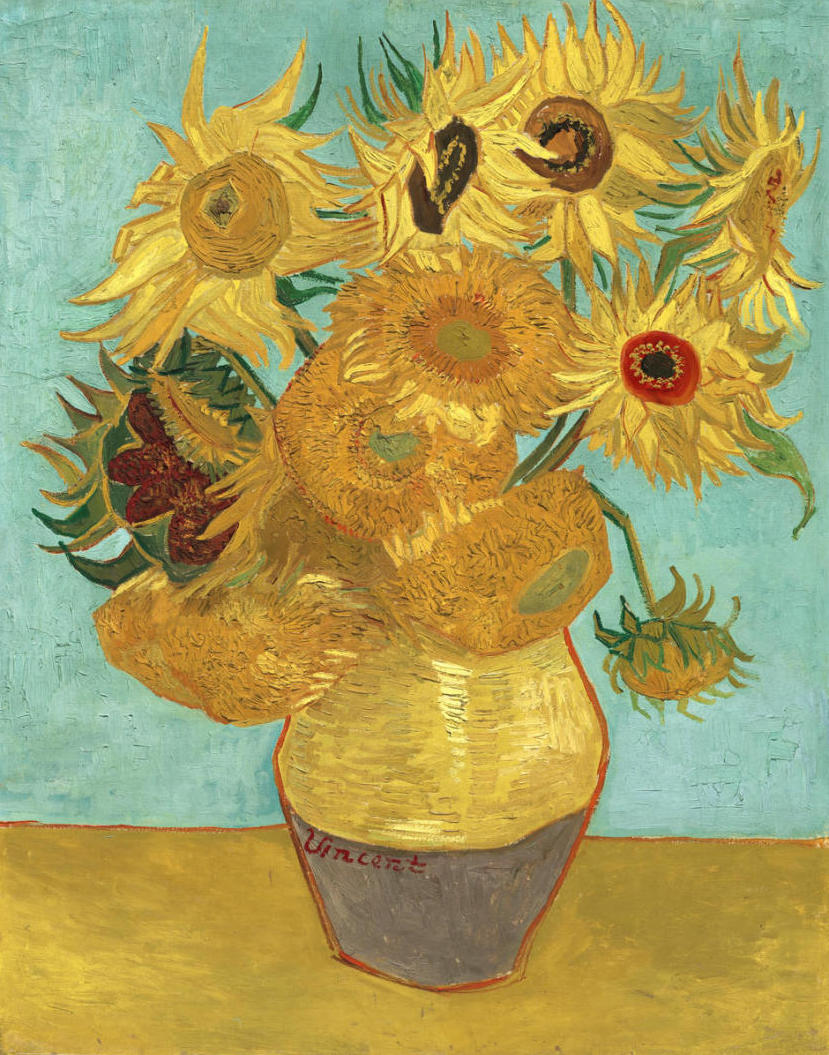
Sunflowers, 1888
The series of “Sunflowers” by Vincent van Gogh counts as one of the most symbolic works in the history of art due to the uses of colour, texture, and emotional force. Those were made during the last months of the 1880s when he expressed his signature Van Gogh style: swirling, expressive movements, a thick impasto, and an innovative use of colour.
Van Gogh did two series of Sunflowers. One was painted in Paris in 1887 and had the flowers lying on the ground, while the second, which was done in Arles in 1888-1889, had them in vases. The latter series is more famous and is often associated with van Gogh’s attempt to decorate his home, known as the Yellow House, in preparation for the arrival of his fellow artist and friend Paul Gauguin. Van Gogh thus saw a room that could be shared by two persons, being creative and expressive; the sunflowers were to greet like a warm display of friendship and life.
The flowers are symbolic of so much, and most of the meanings have to do with Van Gogh’s life. Bright yellows and oranges are believed to symbolise hope, happiness, and the ephemeral beauty of life. On the other hand, the use of decaying and wilting flowers together with blooming flowers is a reminder of the impermanence of life—a poignant reflection of the artist’s struggles with mental health and his quest for meaning in his art. But what is most striking about the series “Sunflowers” is how he could take simple, everyday subjects and give them life. He used an extremely minimalist palette of colours, mainly yellows with earth tones, and achieved amazing depth and variation in them. The thick and bold brushstrokes through the petals, the textured way the paint has been laid on the canvas evokes a sense of movement in the sunflowers, an energy radiating from them. The complementary colours used by Van Gogh, mainly the contrasting of yellow sunflowers against blue-green backgrounds in some versions, make his work very vibrant.
These paintings of the series also reveal van Gogh’s innovative approach to the still life. While most still-life paintings of the period strove for photographic realism, van Gogh was intensely expressive. His sunflowers burst off the canvas—undoubtedly exaggerated in form, luminous in colour—finding the artist’s intense emotional delivery rather than purist representation. Van Gogh painted five major variants of the “Sunflowers in a Vase” paintings, all different yet with an unchanged shining power. And then they spread out among the world’s finest art collections: the Amsterdam Van Gogh Museum, London’s National Gallery, and Munich’s Neue Pinakothek.
That has made the series very popular, and the “Sunflowers” have become an enduring symbol of Van Gogh’s genius: cherished for evoking joy and contemplation with equal facility.
Ultimately, “Sunflowers” is a masterpiece of colour, light, and emotion from the hands of Vincent van Gogh. In this unassuming flower, through his singular interpretation, van Gogh gave the world an enduring icon of beauty, life, and the convolutions of the human condition. Be it an ode to the splendour of nature or a contemplation of life’s futility, van Gogh’s “Sunflowers” remains engaging to audiences more than a century since its execution. In Vincent van Gogh’s “Sunflowers,” there is much more going on than flowers in a painting. It’s an alive expression of the emotional world he has created through colour, texture, and form.
